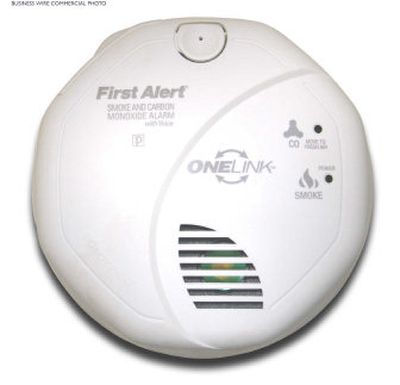Check the smoke detectors

It’s the time of year again when days grow shorter and nights longer and, for most of the U.S., clocks “fall back” an hour.
This twice-annual time change serves as an excellent reminder to replace smoke detector batteries. Though valuable, changing the battery in a smoke detector is only one step in ensuring that this live-saving device does its job to protect your family and home from the threat of fire.
If you don’t have smoke detectors, install them. A smoke detector should be installed in each bedroom and on every level of your home.
If you do have smoke detectors, make sure that they are in good working order.
When it comes to maintaining your smoke detectors, it doesn’t stop with cleaning and battery-changing. Every smoke detector should be tested at least once a month. Every smoke detector is equipped with a “test” button which, when pressed and held down for a few moments, will activate the alarm.
Safely use a contained source of smoke – such as incense or “synthetic smoke” in an aerosol can – to test the detector.
If your smoke detectors are over 10 years old, consider replacing them. The National Fire Protection Agency recommends that residential smoke alarms be replaced after 10 years due to an accumulation of significant levels of dust, dirt and debris.
A smoke alarm works 24 hours a day, seven days a week. That’s more than 87,000 hours over a 10-year period. It makes sense to be safe and replace your smoke alarm just as you would any other household appliance that has reached the end of its useful life.
With smoke detectors, cleanliness is important. A dust or lint-laden smoke detector can’t do its job properly. It should be vacuumed with an upholstery attachment periodically to remove dust buildup. Keep in mind that a smoke detector is particle-sensitive. Therefore, even if it tests as operational, a dusty smoke detector might not operate correctly.
Simply installing and maintaining smoke detectors may not offer your family the level of protection that new technology can provide. A recently-released report by the Consumer Product Safety Commission on the audibility of smoke alarms found that linking, or interconnecting, smoke alarms could provide an earlier warning to fire and smoke. The study also found that wireless technology could be a solution to better protecting American homes.
The two-year study concluded that the location of a home’s smoke alarms, as well as variables like the home’s layout and whether children and/or older adults live there, determine how well and when a family will hear a smoke alarm.
Interconnected smoke alarms link together so that when one alarm detects smoke, it will trigger all other alarms to sound. This immediate reaction provides more warning in more places, which can increase a family’s available escape time. A family has on average only three minutes from when the first smoke alarm sounds to escape a house fire. The sooner they hear a smoke alarm, the sooner they can get out safely.
For several years nonprofit agencies have been researching the indications that children under age 16 sleep too soundly to wake to the sound of a traditional smoke alarm. In addition, America’s population is aging rapidly – nearly 20 percent will be over age 65 by 2030 – bringing about questions regarding age-related hearing and mobility loss. Alternative devices, such as lower frequency alarms or a vocal warning, may be more effective at waking children and older adults, and also could be used to supplement a traditional alarm in caregivers’ rooms.
The findings also refer to a 2002 CPSC-sponsored study by the Naval Research Laboratory, which reported that wireless technology could offer a lower cost alternative for installing interconnected smoke alarms in existing homes.
Currently, interconnected smoke alarm systems are wired into a home during its construction, and to retrofit a home involves significant rewiring and renovation. Nearly 100 million American homes either don’t have interconnected alarms, or remain under-protected.
Brought to market only this summer, these innovative products will enable families to quickly and easily install interconnected smoke alarms, and will include features aimed at providing additional warnings to children and older adults.
While installing smoke alarms is the first step, families must also know how to escape. Families should create and frequently practice a fire escape plan.